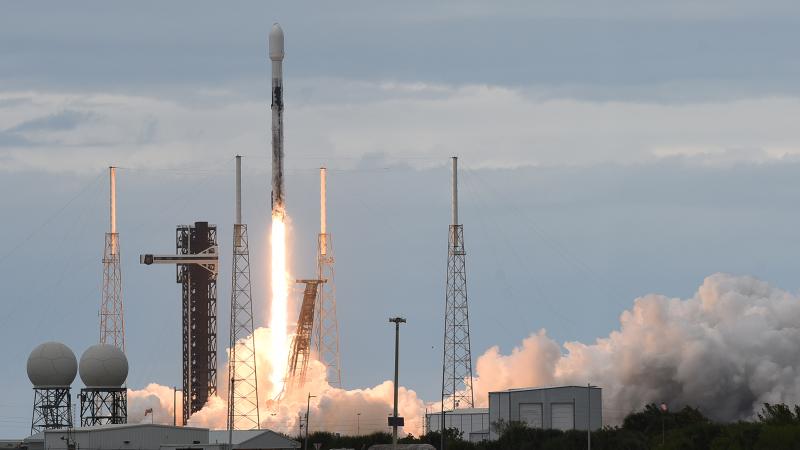Llama blood may pack a blow against COVID, military researchers say
Cormac the llama, along with others of his kind, produces tiny antibodies that can reach where larger antibodies cannot.
Military health system scientists may have found a promising lead on COVID-19 antibody treatment — lurking within the blood of a llama named Cormac.
Cormac, along with others of his kind, produces what researchers describe as "nanobodies," otherwise known as miniature antibodies that can reach where larger antibodies cannot. The tiny proteins appear to protect against COVID-19, and can be used in liquid or aerosol form to protect human lungs, scientists say.
"We hope that these anti-COVID-19 nanobodies may be highly effective and versatile in combating the coronavirus pandemic," said Dr. David Brody, who helped lead the study for the Uniformed Services University of the Health Sciences. The organization he works for is a federal health sciences university and research facility within the Military Health System.
Animals in the camelid family — camels, alpacas, and llamas — produce nanobody proteins within their immune systems, the researchers said. The proteins weigh about one-tenth what most human antibodies weigh. Portions of the nanobodies work to repel microscopic invaders such as viruses and bacteria.
When the pandemic began, scientists at a number of facilities ramped up their efforts to decode the curative properties of llama blood. Among them were Brody and his USU teammate, Thomas J. "T.J." Esparza.
"For years, T.J. and I had been testing out how to use nanobodies to improve brain imaging," Brody said. "When the pandemic broke, we thought this is a once in a lifetime, all-hands-on-deck situation, and joined the fight."
The USU team found that Cormac produced one particular nanobody that is particularly helpful in fighting what are called "spike proteins" that enable infections to take hold.
The wooly, tan-colored Cormac shares virus-fighting abilities with others in an ad hoc herd.
In Texas, a brown llama named Winter has donated blood to scientists at the University of Texas. Scientists there work with llama antibodies in order to develop therapeutics, researcher Daniel Wrapp told Texas Monthly.
"With a vaccine, you give a person something that looks like the virus, so they raise their own antibodies against it," Wrapp said. "With a therapeutic, you just administer the antibodies directly. The goal with both a vaccine or a therapeutic is to get antibodies that recognize the virus and neutralize it into a person's bloodstream."
A black llama named Wally similarly has helped scientists at the University of Pittsburgh.
Experimenting with llama blood is not new to the pandemic. Some scientists, noting that such research requires access to llamas, have looked for other ways to obtain camelid antibodies. Researchers two years ago at the University of California produced the antibodies from specially engineered yeast.
The USU team, meanwhile, has shown that Cormac's nanobodies were effective when sprayed through a nebulizer onto a petri dish.
"One of the exciting things about nanobodies is that, unlike most regular antibodies, they can be aerosolized and inhaled to coat the lungs and airways," Brody said. "This is promising in that it could potentially be used to protect the lungs from infections."
Researchers have not said if nor when the llama therapeutics would be available to the public.
















